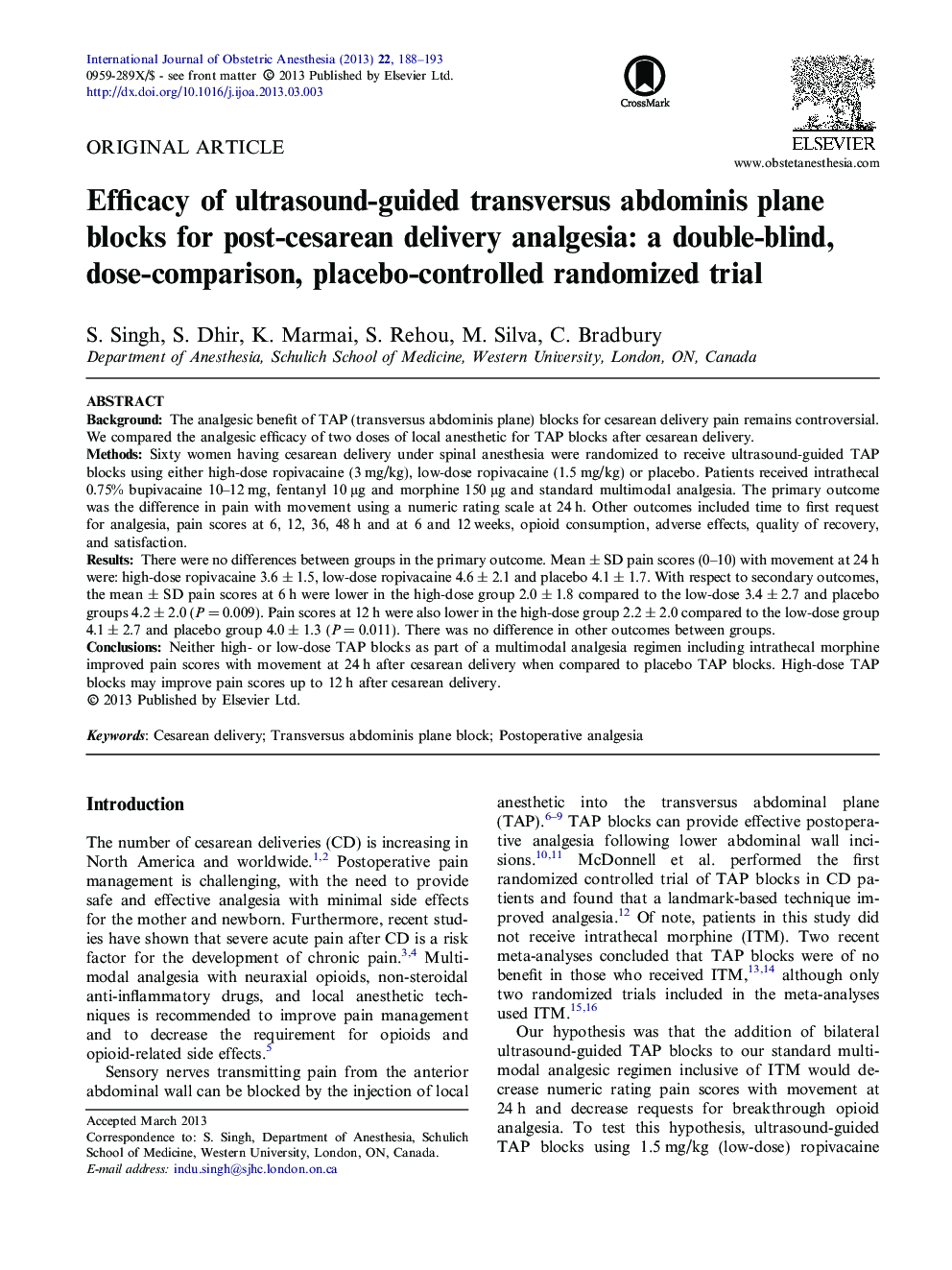| Article ID | Journal | Published Year | Pages | File Type |
|---|---|---|---|---|
| 2757630 | International Journal of Obstetric Anesthesia | 2013 | 6 Pages |
BackgroundThe analgesic benefit of TAP (transversus abdominis plane) blocks for cesarean delivery pain remains controversial. We compared the analgesic efficacy of two doses of local anesthetic for TAP blocks after cesarean delivery.MethodsSixty women having cesarean delivery under spinal anesthesia were randomized to receive ultrasound-guided TAP blocks using either high-dose ropivacaine (3 mg/kg), low-dose ropivacaine (1.5 mg/kg) or placebo. Patients received intrathecal 0.75% bupivacaine 10–12 mg, fentanyl 10 μg and morphine 150 μg and standard multimodal analgesia. The primary outcome was the difference in pain with movement using a numeric rating scale at 24 h. Other outcomes included time to first request for analgesia, pain scores at 6, 12, 36, 48 h and at 6 and 12 weeks, opioid consumption, adverse effects, quality of recovery, and satisfaction.ResultsThere were no differences between groups in the primary outcome. Mean ± SD pain scores (0–10) with movement at 24 h were: high-dose ropivacaine 3.6 ± 1.5, low-dose ropivacaine 4.6 ± 2.1 and placebo 4.1 ± 1.7. With respect to secondary outcomes, the mean ± SD pain scores at 6 h were lower in the high-dose group 2.0 ± 1.8 compared to the low-dose 3.4 ± 2.7 and placebo groups 4.2 ± 2.0 (P = 0.009). Pain scores at 12 h were also lower in the high-dose group 2.2 ± 2.0 compared to the low-dose group 4.1 ± 2.7 and placebo group 4.0 ± 1.3 (P = 0.011). There was no difference in other outcomes between groups.ConclusionsNeither high- or low-dose TAP blocks as part of a multimodal analgesia regimen including intrathecal morphine improved pain scores with movement at 24 h after cesarean delivery when compared to placebo TAP blocks. High-dose TAP blocks may improve pain scores up to 12 h after cesarean delivery.
